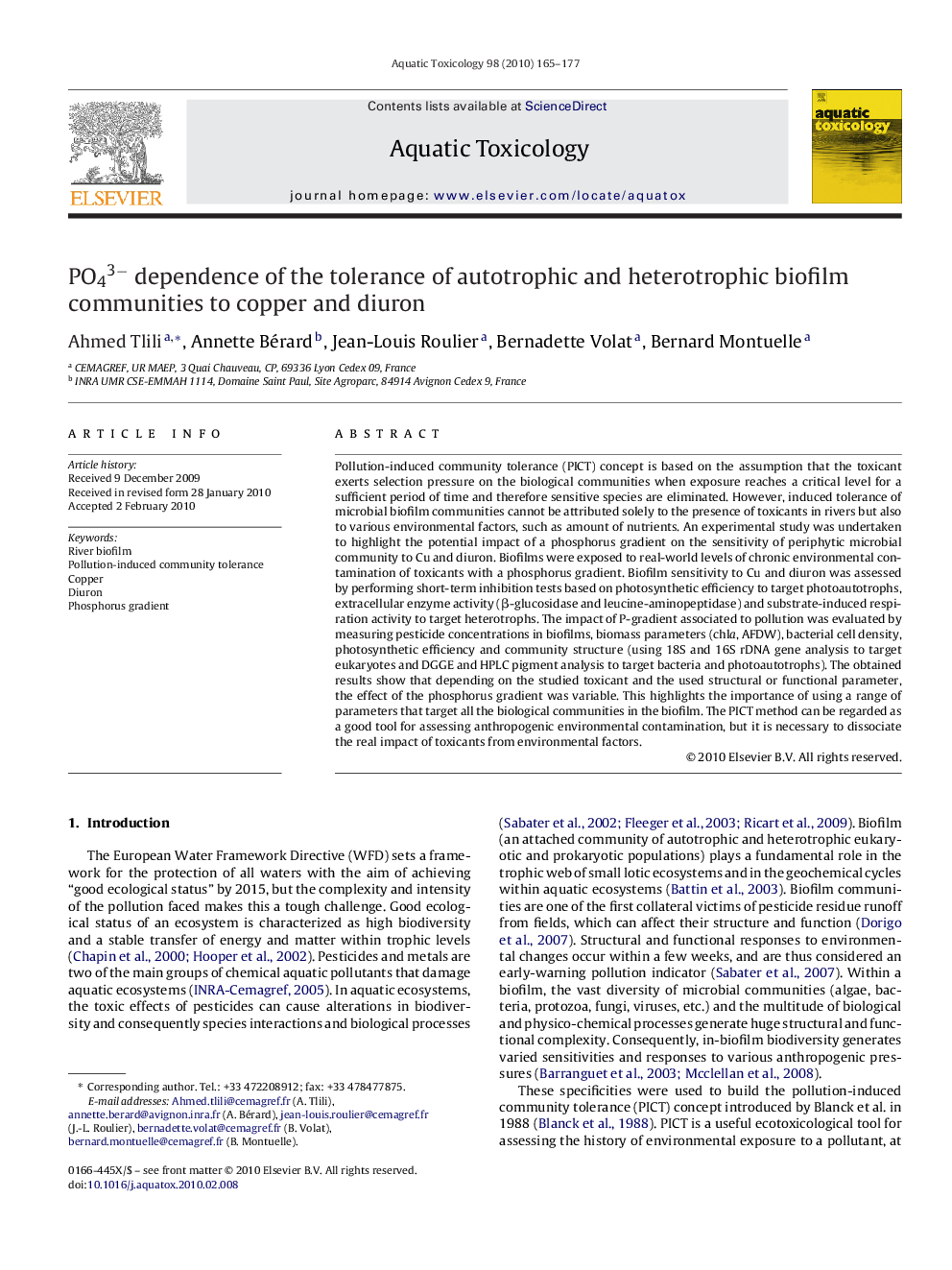| Article ID | Journal | Published Year | Pages | File Type |
|---|---|---|---|---|
| 4530406 | Aquatic Toxicology | 2010 | 13 Pages |
Pollution-induced community tolerance (PICT) concept is based on the assumption that the toxicant exerts selection pressure on the biological communities when exposure reaches a critical level for a sufficient period of time and therefore sensitive species are eliminated. However, induced tolerance of microbial biofilm communities cannot be attributed solely to the presence of toxicants in rivers but also to various environmental factors, such as amount of nutrients. An experimental study was undertaken to highlight the potential impact of a phosphorus gradient on the sensitivity of periphytic microbial community to Cu and diuron. Biofilms were exposed to real-world levels of chronic environmental contamination of toxicants with a phosphorus gradient. Biofilm sensitivity to Cu and diuron was assessed by performing short-term inhibition tests based on photosynthetic efficiency to target photoautotrophs, extracellular enzyme activity (β-glucosidase and leucine-aminopeptidase) and substrate-induced respiration activity to target heterotrophs. The impact of P-gradient associated to pollution was evaluated by measuring pesticide concentrations in biofilms, biomass parameters (chla, AFDW), bacterial cell density, photosynthetic efficiency and community structure (using 18S and 16S rDNA gene analysis to target eukaryotes and DGGE and HPLC pigment analysis to target bacteria and photoautotrophs). The obtained results show that depending on the studied toxicant and the used structural or functional parameter, the effect of the phosphorus gradient was variable. This highlights the importance of using a range of parameters that target all the biological communities in the biofilm. The PICT method can be regarded as a good tool for assessing anthropogenic environmental contamination, but it is necessary to dissociate the real impact of toxicants from environmental factors.
